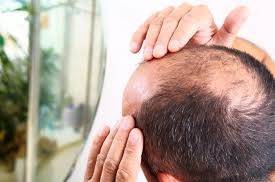Mar 29 / 2025
Male Pattern Hair Loss: Causes, Effects, and Solutions

What is Male Pattern Hair Loss and Why Does it Happen?
- Have you ever noticed your hair thinning or receding at the temples? This is often the first sign of Male Pattern Hair Loss (MPHL), also known as androgenetic alopecia.
- MPHL is the most common form of hair loss in men, affecting nearly 50% of males by the age of 50.
- This condition is primarily genetic, meaning if your father or grandfather experienced hair loss, you are more likely to face it as well.
- The main cause is the hormone dihydrotestosterone (DHT), which shrinks hair follicles, leading to shorter growth cycles and, eventually, hair loss.
- Unlike temporary hair loss, MPHL is progressive, meaning it worsens over time if left untreated.
How to Recognize the Symptoms?
- Early detection of MPHL is crucial for effective treatment.
- The most common symptoms include:
- Receding hairline, especially at the temples
- Thinning hair at the crown
- Overall reduction in hair density
- Increased hair shedding, especially during showers or brushing
- Recognizing these symptoms early can help you take preventive measures before significant hair loss occurs.
The Psychological Impact of Hair Loss
- Hair loss is not just a physical issue; it has profound psychological effects.
- Many men experience:
- Decreased self-esteem and confidence
- Anxiety and stress over appearance
- Social withdrawal due to embarrassment
- Depression in severe cases
- Addressing MPHL early can help reduce the emotional toll and improve overall well-being.
Are There Natural Ways to Prevent Hair Loss?
- While MPHL is primarily genetic, certain lifestyle changes can slow down its progression.
- Natural remedies include:
- Eating a nutrient-rich diet with vitamins such as biotin and vitamin D
- Reducing stress through activities like meditation and exercise
- Using essential oils like rosemary and peppermint to stimulate hair growth
- Avoiding harsh chemical treatments and excessive heat styling
- Although these methods cannot completely stop MPHL, they can contribute to healthier hair and scalp conditions.
Medical Treatments for Male Pattern Hair Loss
- If natural methods are not enough, several medical treatments can help slow or even reverse hair loss.
- Popular medical treatments include:
- Minoxidil (a topical solution that stimulates hair growth)
- Low-Level Laser Therapy (LLLT) to enhance blood circulation in the scalp Hair transplants for advanced cases
- Prescription medications that block DHT production.
- Consulting a dermatologist can help determine the best treatment option for your specific condition.
Treatment with Finax (Finasteride)
- Finax (Finasteride) is a highly effective prescription medication for MPHL that specifically targets DHT, the primary cause of hair loss.
- It works by:
- Inhibiting the enzyme 5-alpha reductase, which is responsible for converting testosterone into DHT
- Lowering DHT levels in the scalp, thereby preventing further hair follicle shrinkage
- Encouraging hair regrowth by extending the hair growth cycle
- Clinical studies show that consistent use of Finax can significantly reduce hair loss and promote noticeable regrowth within 3-6 months.
- While results may vary, many men experience thicker, healthier hair with continued use.
- However, it is essential to consult a healthcare professional before starting Finax, as it may have potential side effects, including reduced libido and hormonal changes.
The Importance of Early Action
- Male Pattern Hair Loss is a common yet treatable condition if addressed early.
- Recognizing symptoms and seeking treatment can make a significant difference in hair preservation and overall confidence.
- From natural remedies to medical treatments like Finax (Finasteride), there are multiple solutions available to combat hair loss.
- Taking proactive steps today with treatments such as Finax can help maintain a fuller, healthier head of hair for years to come.
- Finax (Finasteride) remains one of the most effective solutions for MPHL, offering long-term benefits in preventing further hair loss and promoting regrowth when used consistently under medical supervision.
Article Post:Editorial Team of RXShop.md
(Updated at Mar 29 / 2025)